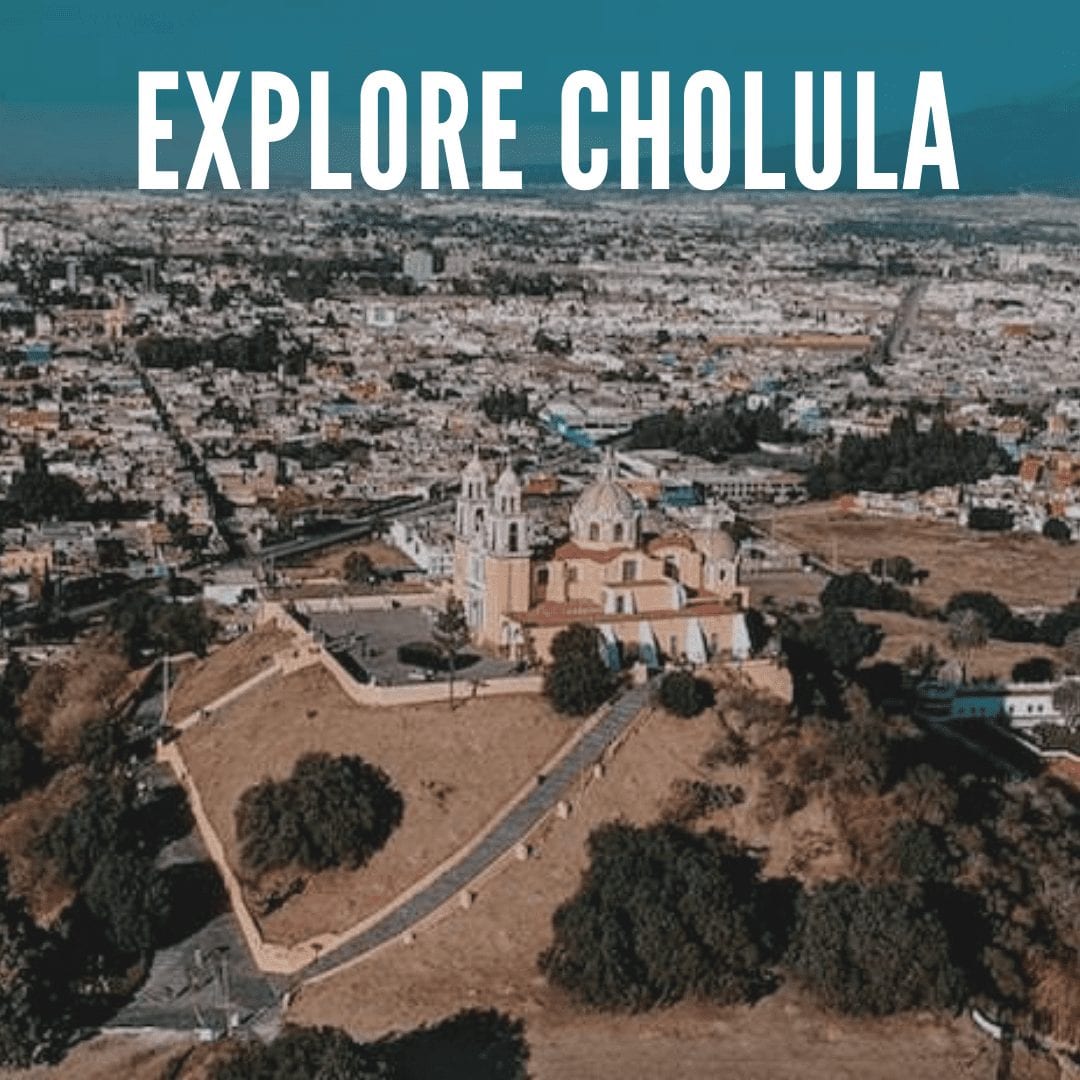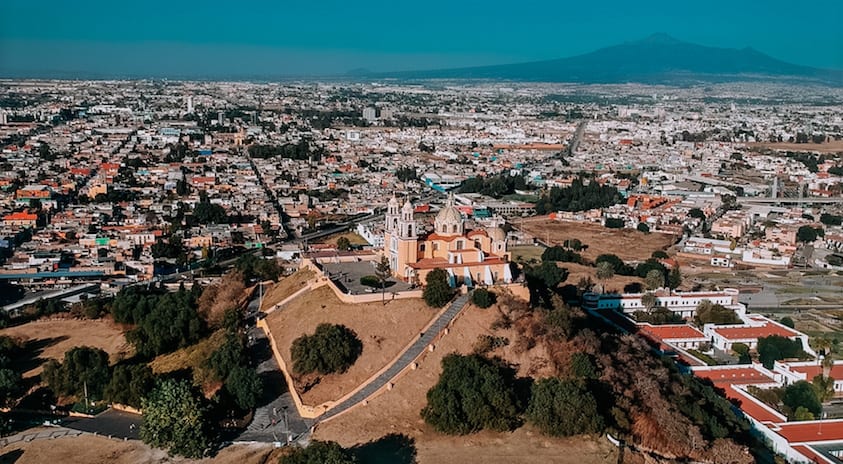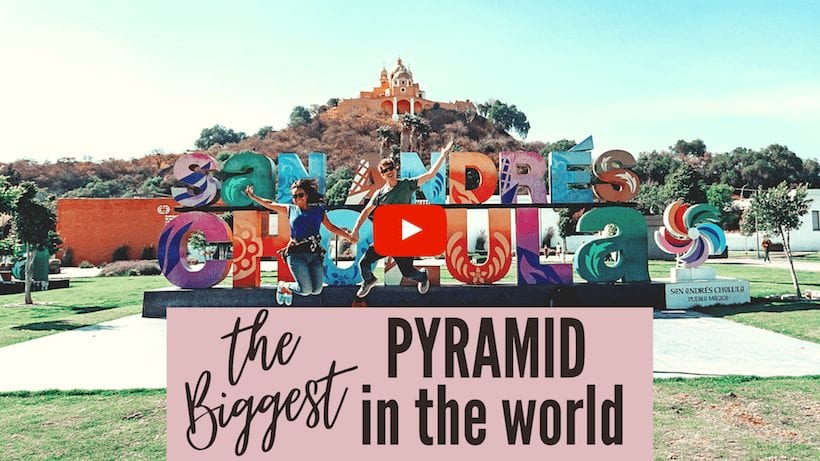Located adjacent to the very popular and famous city of Puebla de Zaragoza in the State of Puebla (known for the Cinco de Mayo festival on May 5th) and a stone’s throw away from an active volcano nestled in the foothills leading up to Mexico City you will find Cholula, a beautiful Pueblo Magico.
Cholula is a magical town with amazing things to see and to do and definitely deserves the title of a Pueblo Magico here in Mexico. We spent just a short time here but had one of the best days of our 3-week road trip exploring and soaking up this epically historical city.
Our Arrival
Driving into Cholula after a lengthy 8-hour car ride from Villahermosa we were, to say the least relieved. Relieved to have a place to lay our heads, but also if you have ever been to the city of Cholula it has a feeling that is familiar and electric at the same time. We drove down the main street headed for the Zocolo looking for our Airbnb that was supposed to be next to one of the main churches and Parroquia de San Andres Apostol. We were so surprised at how lovely the town felt. We had heard great things about Cholula but this was our first time actually laying our eyes on it. Cholula was very active with a lot of young, hip college-age kids walking up and down the main street that was lined with restaurants and bars.
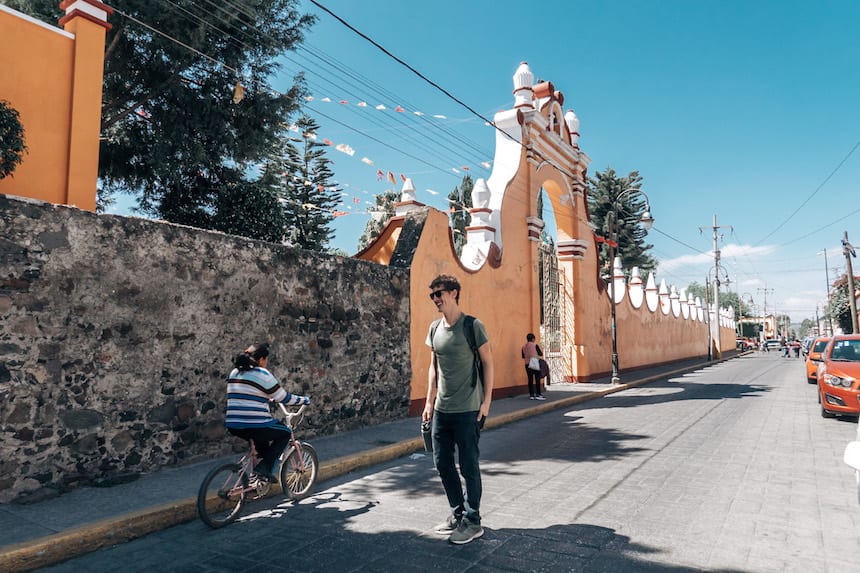
We had looked up information about the city before we arrived checking out the best spots to eat and stay along with things to do on our 24-hour pitstop from our road trip. We were on day two of a three-week road trip heading to Texas to get our temporary residency. We wanted to see everything we could in the time we had but we were also deciding if it would be a good spot to stop on our return to Merida, Mexico.
Best Time of the Year to Visit
The weather in Cholula is ideal for any time of the year with highs rarely reaching into the triple digits yet also not going into freezing temperatures below 32 F. Coming from Merida where temperatures are different degrees of hot it was a wonderful surprise and change. We even had the opportunity to wear long-sleeve shirts. If you like warm-weather like us, make sure to plan for a trip around mid-March to late May (79 F at a high and 53 F at the low), when it is the best time to visit this delightful city.
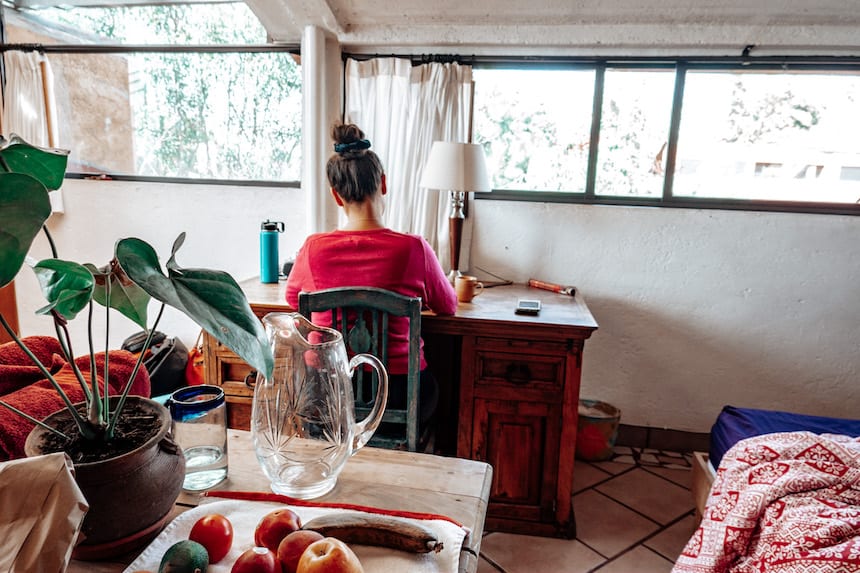
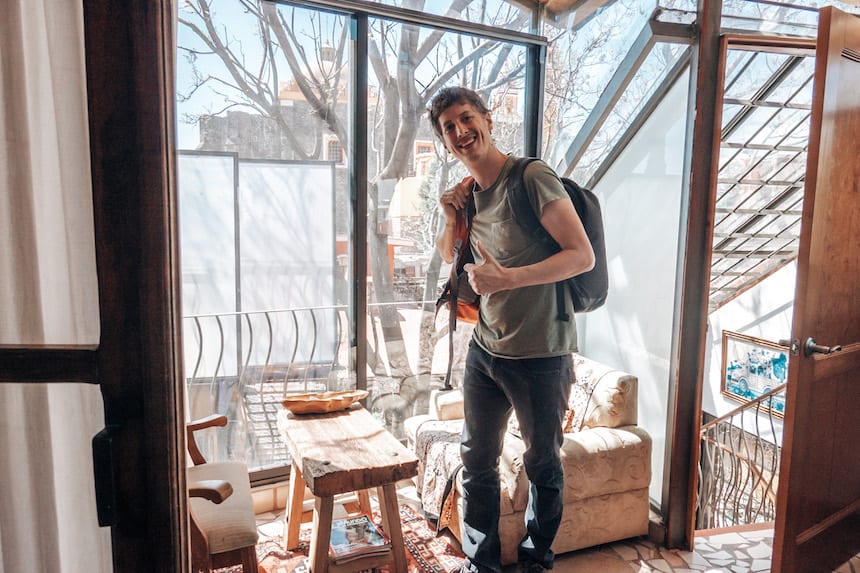
Where to Stay
We typically always choose Airbnb when we go to a new area and we look for a place that has good reviews with ideally kind and present hosts who can tell you a little more about the local things to do and see. To us, that is the charm of Airbnb, though this is sadly changing somewhat to feel a bit more corporate. We prefer to get to know our hosts a little bit more and some of our favorite Airbnb stays have been when we get to hang out with the hosts.
Our Airbnb was hosted by Ela and Hugo and it was so unique and beautiful. They were welcoming and the place immediately felt like a home away from home. It was also in the best, most central location. Steps away from Parroquia de San Andres Apostol where one of the main churches and squares (zocalos) of Cholula is located.

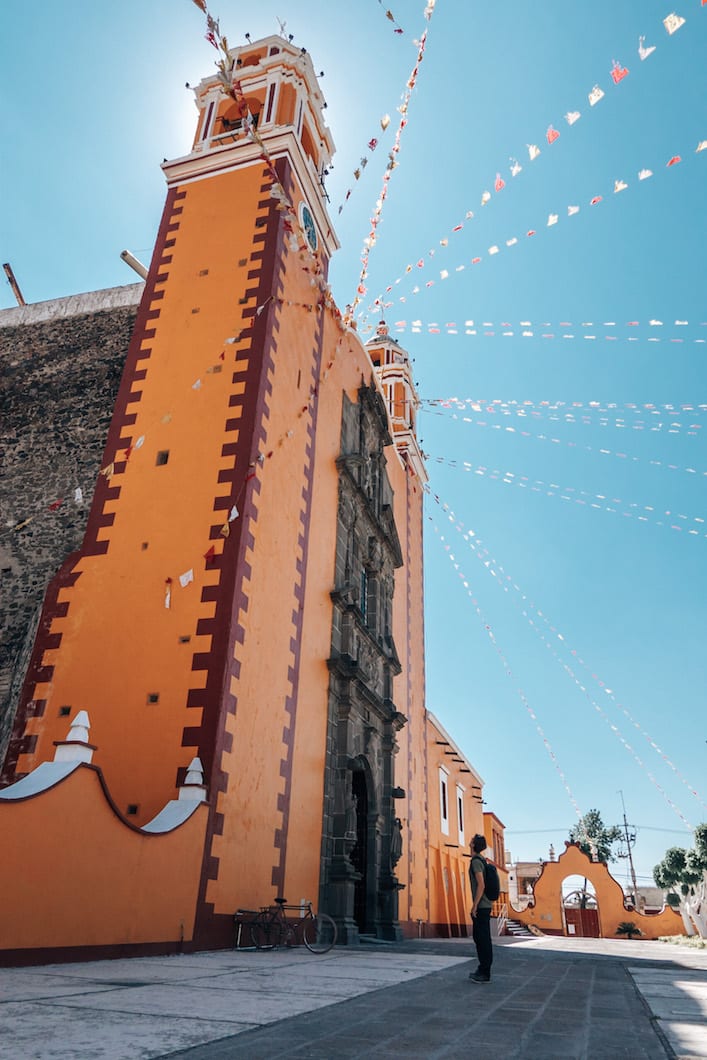
The Best Places to Eat
Ocho 30
Ocho 30 complements the town of Cholula, perfectly matching the beauty of the city with the same beauty found inside this warming, artistic environment. We came for dinner and breakfast and we loved the food, drinks and the environment very much. Multiple areas to eat, a front room, side room, a back room, a large courtyard with trees growing within, and twinkly lights plus an upstairs balcony patio.
If we can recommend any dishes we had pancakes with fresh fruit with Matcha tea for breakfast. For dinner, we had some amazingly delicious and unique wood-fired pizza. There were at least a dozen choices of artisan pizzas.
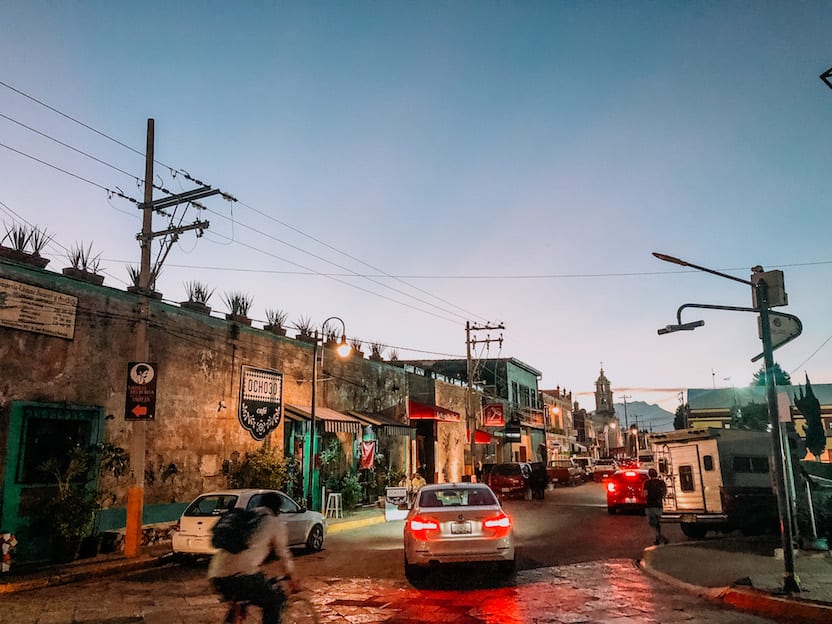
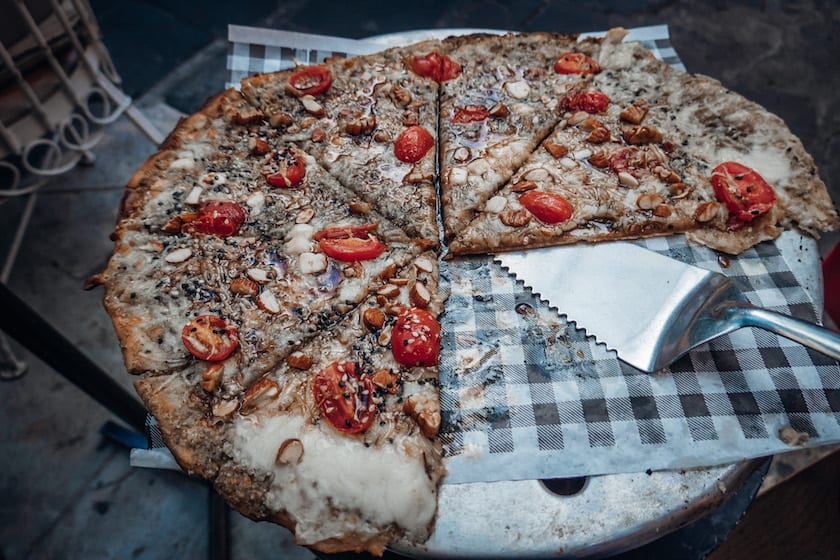
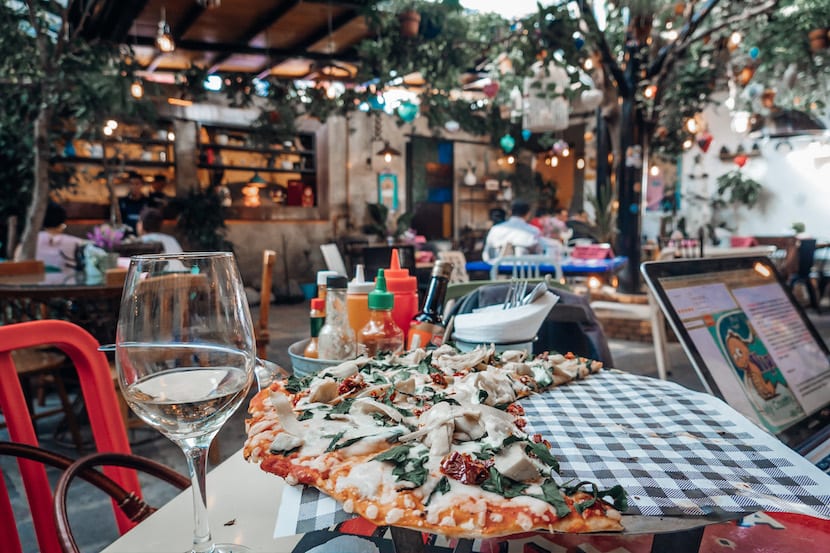
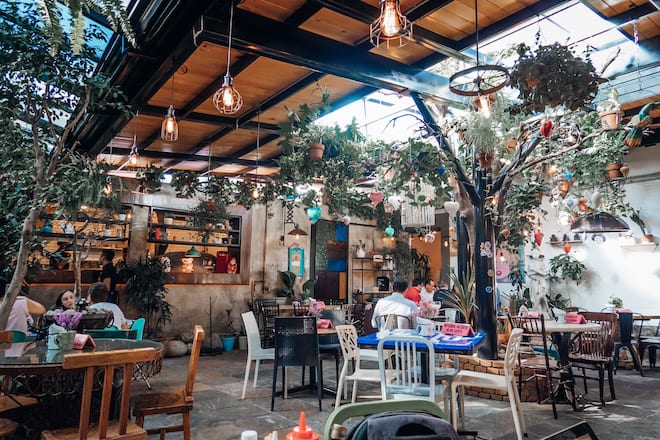
What to See
Depending on how much time you have our advice would be to get up early because Cholula has a lot to offer. It has a beautiful Mexican charm that makes you want to explore the entire town. (Note: if you are an early riser and like coffee, then plan on making your own, as we found very few restaurants or coffee shops open before 9 am).


The Great Pyramid of Cholula, aka Tlachihualtepetl
Start your journey heading to the highest point in the town, Great Pyramid of Cholula also known as Tlachihualtepetl (which translates to “man-made mountain”). We were able to easily walk there by foot from our airbnb and take in the colorful residential side of Cholula on our way.
Easily mistaken for a small hill with a Spanish church on top. The pyramid is hidden under natural growth, dirt, and grass which gives it the appearance of a hill at first sight. But once you begin to explore the area of the archeological site you will see the architecture of the hidden pyramid.

Original Pre-Hispanic Group Names
This is the site of original inhabitants of this area, that has changed over time. The pyramid was built by many different pre-Hispanic indigenous groups in the area including Olmec, Putún Maya, Toltec-Chichimec, Nahuatl speaking tribes, Huexotzingos and finally the Aztecs.
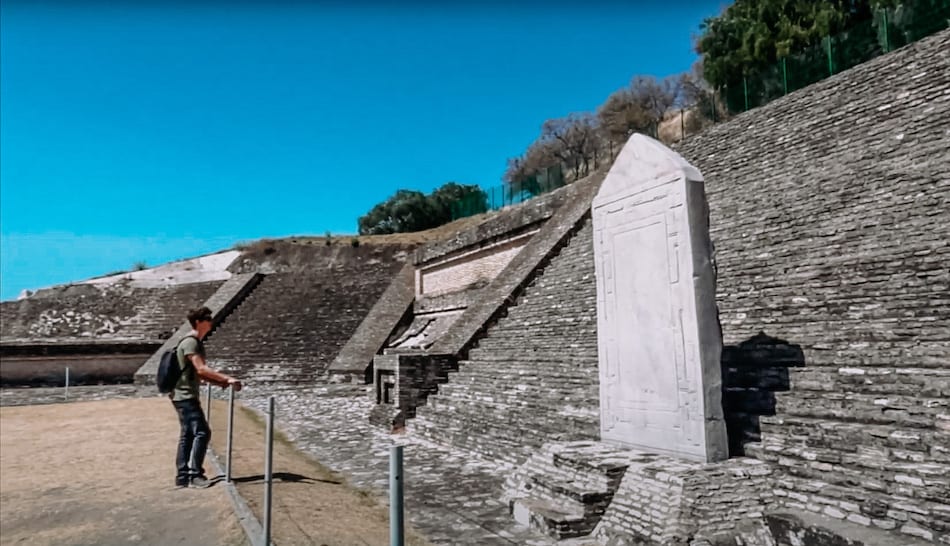
Religious and Cultural Importance of The Great Pyramid
The Great Pyramid was built up over more than a millennium, with the Olmecs beginning to build in 3rd century BC. The continuous building went until the 9th century AD. After the Olmec different indigenous groups moved in. These groups conquered the area and built on top of what had been built before, creating a pyramid that is still the largest pyramid by volume in the world.

Dimensions of the Pyramid
It is also the oldest continuously occupied building in Mesoamerica. It is 66 meters tall (217 feet) and in its final shape, it is 450 by 450 meters (or 1,480 x 1,480 feet). It is 4.45 million cubic meters in total volume (the Great Pyramid of Giza is 2.5 million cubic meters). The pyramid was built in four main construction stages spanning this time. It has influences from neighboring Teotihuacan in Central Mexico, which is two hours north of Cholula, as well as influences from the east along the Gulf Coast in what is modern-day Veracruz State. The Maya people of the Yucatan have also been cited to have influenced the design, architecture, and religious purpose of this site.
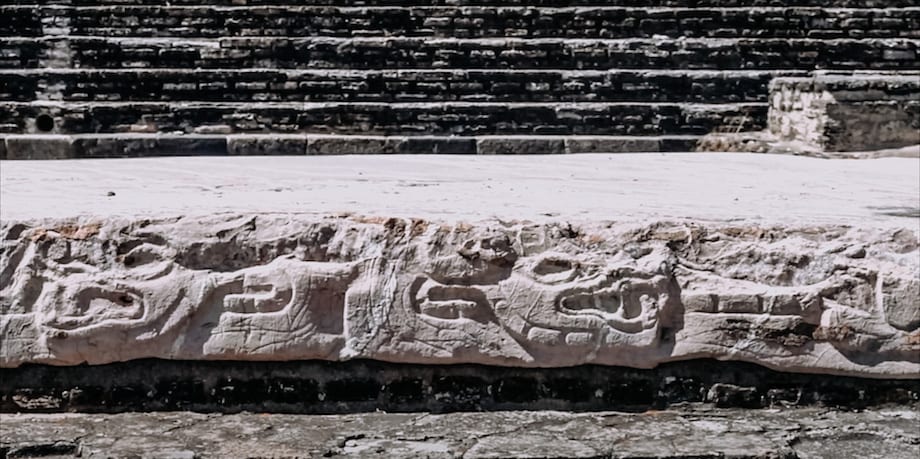
Although many different ethnic groups moved into Cholula along with periods of abandonment – the site was a major religious area and sacred place for the worship of mountain deities, a rain god (in Aztec this god was named Tlāloc) and Quetzalcoatl the popular feathered serpent deity. Evidence of human sacrifices that were offerings during worship was found in the form of human bones by archeologists as they have studied the area in contemporary times. The sacrifices given to the Rain god would have made sense since archeologists believe part of the reason for periods of abandonment was due to drought in the area which negatively impacted agriculture and food security.

Even to this day, it continues to be one of the most famous annual pilgrimage sites with the Shrine of the Virgin of the Remedies being in the church that sits on top of the pyramid.
Three Museum Entrances
We would highly recommend that people visit all three museums located around the pyramid including two archeological entrances and one entrance to the tunnels built by archeologists in the 20th century. This is a fascinating history to learn about and you can’t miss it!
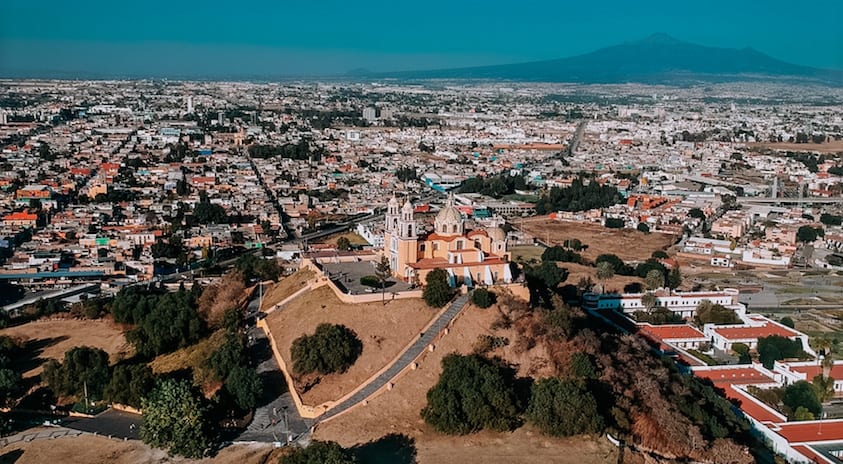
The Tunnels
Once you have explored the upper area of the pyramid take a dive into the labyrinth of tunnels underneath. We assumed that it was all one archeological area that was linked together but you need to go out of the main pyramid area and walk around the corner to the tunnels.
Travel Tip: bring your ticket from the first area and your admittance to the tunnels is free.
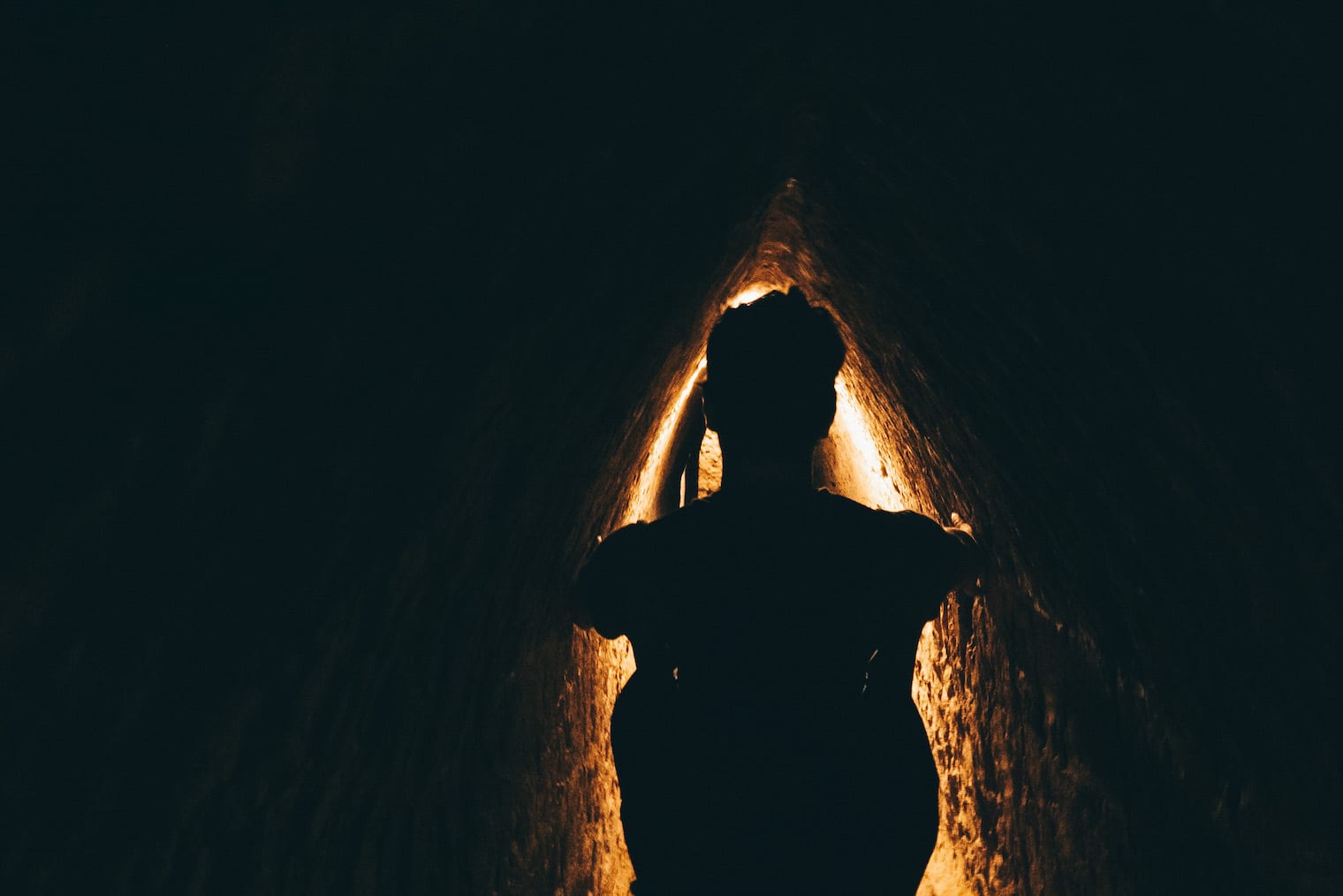
This was the highlight of our day and a must if you are in the area. We also couldn’t recommend enough to visit the tunnels AFTER learning the entire history in the first two archeological museums.
The expression of hearing a pin drop is true as the tunnels seem to suck all of the noise from the air and make pure silence. It is an incredibly unique experience walking underneath a pyramid looking around corners and seeing the maze lead up and down twisting around the underworld of the ancient pyramid.
It is easy to imagine that these tunnels were entrances to hidden altars and temples or even tombs of a world past, however we learned after the fact that indeed the tunnels had been dug out by archeologists in the 20th century. They used the arch design above the walkways to create stable tunnels that would not be crushed by the mammoth pyramid. More than 5 miles of tunnels were excavated!
We highly recommend this unforgettable experience!!!
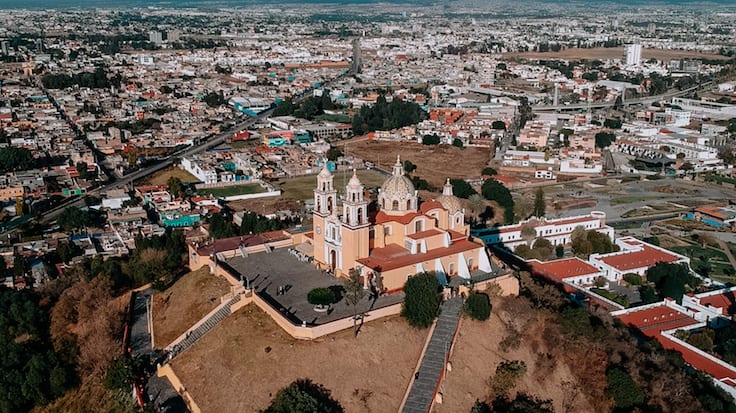
The Cathedral | Santuario de Nuestra Señora de los Remedios
From the tunnels exit, it was also just a small hike to the famous cathedral built right on top of the huge pyramid. It is hard not to walk a little further to see the Spanish church built right on top of the largest pyramid in the world.
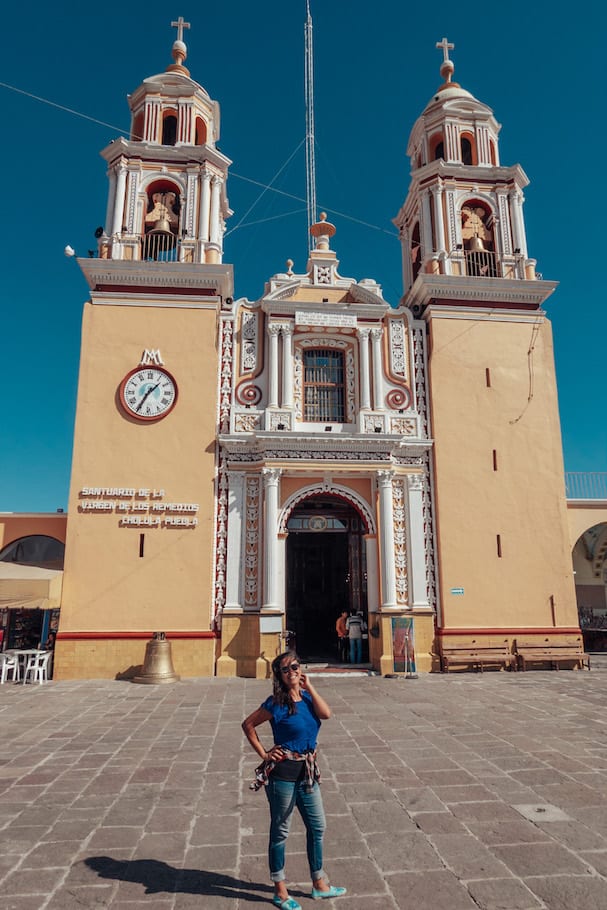

When Hernán Cortés got to Cholula in the early 16th century the Aztecs were occupying the area. He ordered there to be 365 churches built but in fact, there are only about 45 churches in the area total (which is still a LOT of churches)!

Symbols of Conquest
The church sitting on top of the remains of the biggest pyramid in the world is very symbolic. It symbolizes the Spanish and European conquest of the indigenous inhabitants’ land, their way of life, and even their very lives. It symbolizes their persistent and violent history of forcing the Christian Catholic religion on the indigenous people otherwise face death, demise, and destruction which sadly did happen. The fact that they often built their religious monuments and churches on top of the fallen sacred pyramids by tearing down and using the same stones and materials to construct their cathedrals is always disheartening for us to see.
Despite the history it is a beautifully constructed church and as you explore around you cannot find a better view of the Popocatépetl and Iztaccíhuatl volcanoes.

Cholula and the Great Pyramid is an incredibly fascinating place to visit and see at least once in your lifetime. Take your time to explore it if you can, and if you ever have any questions feel free to let us know in the comments.
Our Vlog!
For more of an in-depth, visual experience of our trip to Cholula check out our vlog about it below!
Like it Pin it
